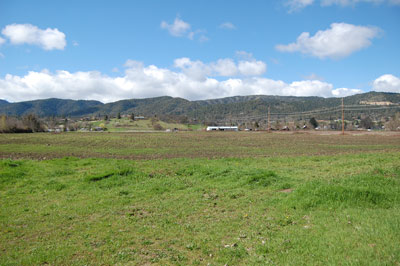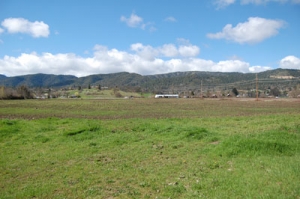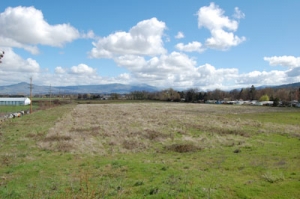Looking Ahead…Planning for Growth and Going “Big”
On March 18, the City Council formally voted to move Jacksonville’s city offices to the Historic Courthouse. Although I still believe that city offices are not the highest and best use of the building, I’m now on-board and look forward to the ribbon-cutting ceremony.
In my view, NOW is the time to look ahead and plan a far more important project—expanding Jacksonville’s urban growth boundary and our economic, housing and population base. This is a question our city leaders must revisit today and one the next mayor and city council must address. Now is time to go back to the days when the city “went big” and took on more than one major development project at a time. Doing so will require our Mayor, Administrator and Councilors, to look outside their comfort zones and make BIG decisions. Although important, the Courthouse project will do nothing to increase Jacksonville’s tax base—government entities don’t pay property taxes, they spend them! From a budget standpoint, the move could have unintended consequences, eating-up more resources for unforeseen building maintenance and renovation costs. Although the council
discussed seismic retrofits, electrical and plumbing upgrades, the addition of an ADA-approved
elevator and bathrooms, space planning and other topics, there’s just no guarantee costs won’t escalate, leaving taxpayers on the hook.
Jacksonville is in a conundrum since expanding its population base includes a chance of tipping the quality of life balance that makes living here so pleasant. However, without new development (housing & commercial) and new property taxes, budgetary pressure will mount as costs for city services outstrip our relatively “stagnant” property tax base. With more and more “outsiders” moving here and demanding more from city services and staff, saying “no” or “stay away” is not an option…Jacksonville has been discovered and money talks. There will be more higher-income retirees moving here from more “sophisticated” areas. Ironically, these “escapees” are from areas with higher levels of community services, paid for by huge populations they are escaping to begin with. And, while demanding higher-cost services from police, fire and public works, higher property values from new housing developments they desire will actually add more revenue to city coffers in the long run. On the housing front, Jacksonville should encourage more housing styles to be built, including single family and multi-family townhomes and condominiums that have mass appeal.
Jacksonville also needs to expand economic opportunities to attract more live/work residents – I’m speaking of a light commercial district that won’t compete with, but will enhance the downtown core area. Such an area could accommodate a full-scale brewery, commercial/retail bakery, wine crush pad/production facility, multiple commercial kitchens, a chocolatier, graphic art design/architectural studios, a cooking school, professional office space, a charter school, medical offices, a larger fitness/health club and other uses.
In 2012, Good Bean owner Michael Kell was forced to move his roasting operation (and 5 full-time jobs) out of Jacksonville because there was no commercial space to expand his booming coffee and bean roasting business. Paul Murdoch of Gary West Meats now faces a similar dilemma, having outgrown his production facility that produces world-class jerky and artisan food products. In March, Herb Quady moved his new wine production business to the SOS Pear Station on Stewart Avenue in Medford because no facility was available in Jacksonville. On the housing front, Windermere Realtor Sally Bell has sold 21 of 26 lots/homes in the Vineyard View subdivision. With home/lot construction prices in the $400,000-$600,000 range, this type of development is exactly what’s in demand. Bell noted she could easily sell another 26-50 lots at this time if available. As a city, we should be alarmed when businesses move away or are unable to meet a current market demand and should be working years in advance to attract and maintain business here in-town…it’s good for our local economy and quality of life.
A new development area could also be the site of a new fire station, community swimming pool and dog park. It would be connected to the downtown core by a bicycle and walking path, keeping automobile use to a minimum. This area would also serve as a transportation route, helping move larger trucks off Highway 238. At some point, a serious and tough decision needs to be made on the “B” word… the bypass…by visionary and brave city leaders! Trucks rumbling through the core create air pollution, noise and vibrations that degrade our historic brick buildings. Other than losing brick buildings in an earthquake, truck traffic is the major threat to our “National Historic Landmark” status. Lose the “Landmark” and our residential property values will plunge.
In my view, I’m speaking about a mixed-use area—one that meets the needs of Jacksonville over the next 25-50 years and one that meets state-mandated growth goals for a population of 4200 by 2040. At some point, the city will be forced to expand its urban boundary…this will be mandated by the state sooner or later. The city needs to revisit the topic now and start talking about a 30 acre piece of land known as JK-1, located on the outskirts of town, bordered on the north by Oregon Street and by Highway 238 on the south. Other than during state-mandated updates to our Comprehensive Plan, expansion has not been addressed recently. JK-1 has been the city’s top choice for an Urban Growth Boundary addition since 2003 and seemed a shoe-in for annexation until getting caught-up in the City/County political drama surrounding the Regional Problem Solving effort back in 2010. Now 10-years delayed, JK-1 needs to be the city’s top priority. Failure to bring this parcel into the city will thwart economic and housing development, leading to higher city taxes/fees and an eventual decline in Jacksonville’s regional status. In my view, it’s time for economic development to be topic #1 in our Small Town with Big Atmosphere.
Posted March 25, 2014



 Whitman Parker is Owner and Publisher of Jacksonville Review and Southern Oregon Wine Scene magazines.
Whitman Parker is Owner and Publisher of Jacksonville Review and Southern Oregon Wine Scene magazines.